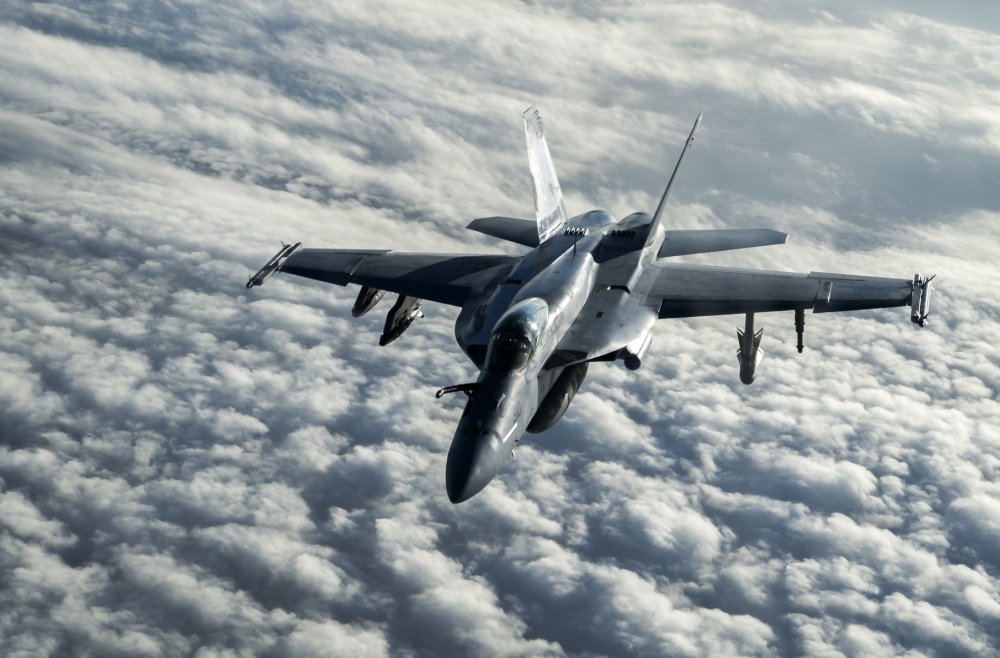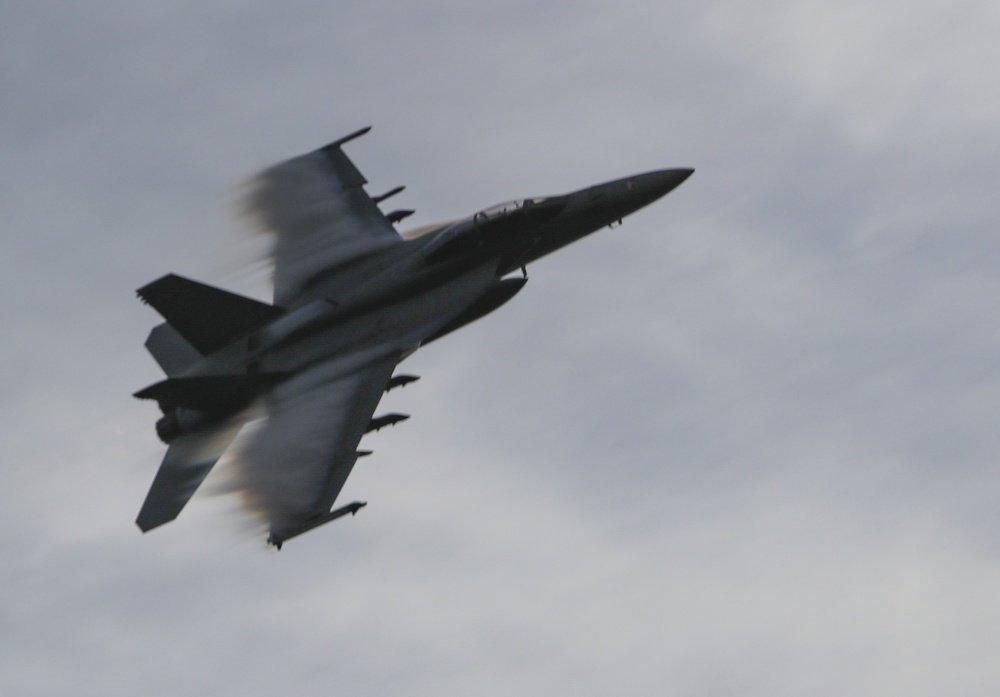
A U.S. Navy F/A-18E Super Hornet flies over Afghanistan, Jan. 23, 2020. The F/A-18E is the Navy’s primary strike and air superiority aircraft providing force projection, interdiction, and close and deep air support. U.S. Air Force photo by Staff Sgt. Matthew Lotz via DVIDS.
A Navy pilot is reportedly in stable condition after safely ejecting from an F/A-18E Super Hornet fighter jet that crashed in California on Tuesday.
“An F/A-18E Super Hornet from Naval Air Station Lemoore experienced a mishap at approximately 10:10 a.m. today during a routine training flight near Naval Air Weapons Station China Lake,” Cmdr. Zachary Harrell, a spokesman for Naval Air Forces, said Tuesday.
“The pilot ejected safely and was taken to a local medical facility for examination,” Harrell said.
Video below shows an F-18 crash in Kern County, California near the Robbers Roost rock formation, pilot successfully ejected, parachute opened, no word on injuries. pic.twitter.com/S6J66XQ4Di
— ???? ? (@IntelDoge) October 20, 2020
The Super Hornet crashed in an open field, and local first responders responded to the site. While the wreckage reportedly started a small brush fire, there were no reported casualties on the ground. The cause of the crash is under investigation, the Navy said.
An inland air base located in California’s Central Valley, Naval Air Station Lemoore is the Navy’s newest and largest “master jet base” and home to Strike Fighter Wing Pacific. The designation of master jet base is given to Navy air bases that permanently house carrier-based tactical jet squadrons and carrier air wings.
Naval Air Weapons Station China Lake is among the Navy’s top facilities for aviation and weapons research, development, acquisition, testing, and evaluation.

Tuesday’s crash comes just three weeks after a Sept. 29 mishap in which a Marine Corps F-35B Lightning II warplane crashed following a collision with a KC-130J aerial tanker during an air-to-air refueling operation near the Salton Sea in Southern California.
The F-35 pilot ejected and survived, and all eight crew members of the KC-130J tanker survived after a forced landing in a farm field.
The F/A-18E is the Navy’s primary strike and air superiority aircraft providing force projection, interdiction, and close and deep air support. Originally developed by McDonnell Douglas, which is now a part of Boeing, the Super Hornet first flew in 1995 and was introduced to naval battle groups in 2001.
The Super Hornets have been upgraded to new “blocks” over the years, integrating new technologies to improve weapons systems, performance, and survivability in combat. There are roughly 600 Super Hornets and their electronic warfare variant known as the Growler currently in service.

BRCC and Bad Moon Print Press team up for an exclusive, limited-edition T-shirt design!
BRCC partners with Team Room Design for an exclusive T-shirt release!
Thirty Seconds Out has partnered with BRCC for an exclusive shirt design invoking the God of Winter.
Lucas O'Hara of Grizzly Forge has teamed up with BRCC for a badass, exclusive Shirt Club T-shirt design featuring his most popular knife and tiomahawk.
Coffee or Die sits down with one of the graphic designers behind Black Rifle Coffee's signature look and vibe.
Biden will award the Medal of Honor to a Vietnam War Army helicopter pilot who risked his life to save a reconnaissance team from almost certain death.
Ever wonder how much Jack Mandaville would f*ck sh*t up if he went back in time? The American Revolution didn't even see him coming.
A nearly 200-year-old West Point time capsule that at first appeared to yield little more than dust contains hidden treasure, the US Military Academy said.












